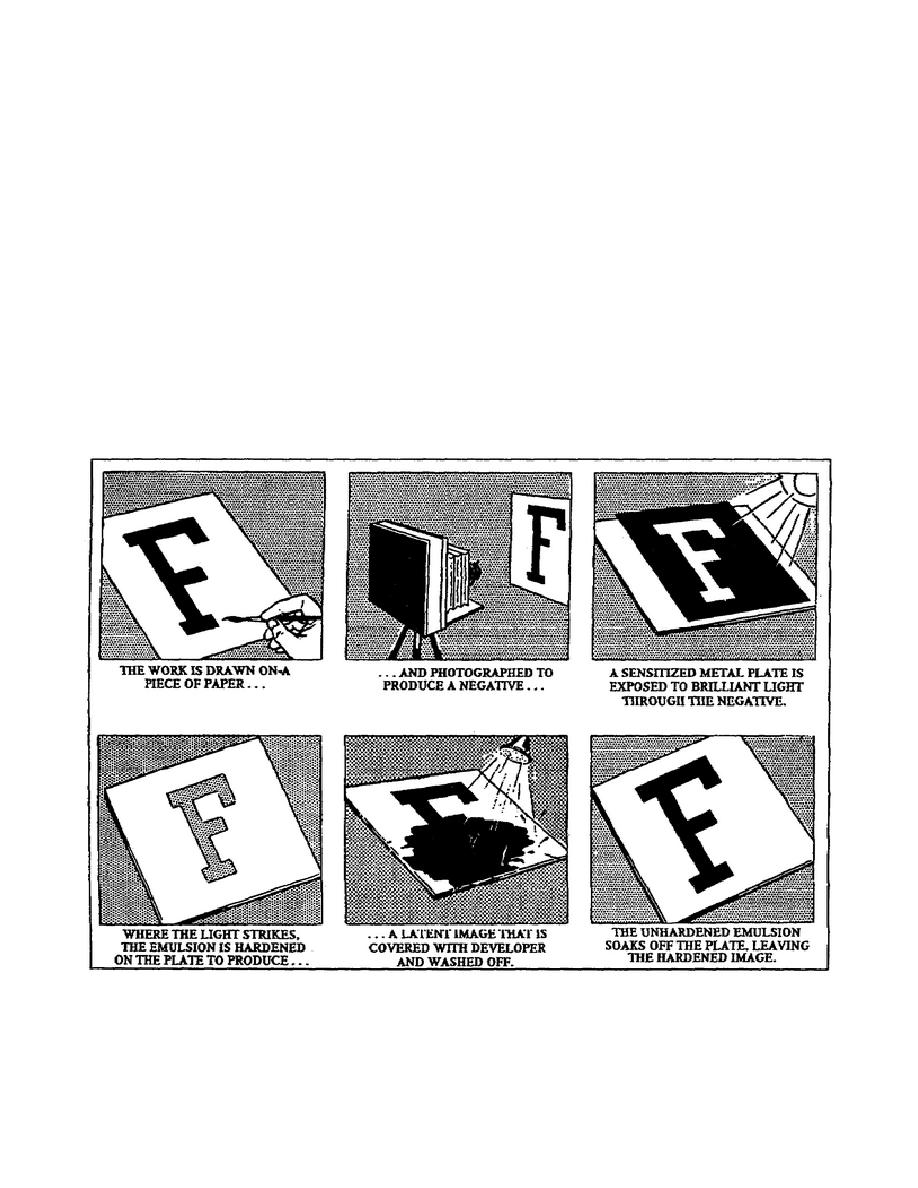
press runs, and produces a superior grade of printing.
The process
started as hand drawings on a flat limestone with greasy crayons. The
area covered by the greasy crayon rejected the water when flushed, and
retained only the oily ink. Pressing the paper against the inked surface
created the printed copy. You can still identify modern lithography by
its characteristic flat plane with the image on the surface of the plane.
From drawings on stone, this process has moved to photoprinting on
sensitized metal.
A lithographic plate is a thin, flat, chemically-
treated zinc or aluminum metal surface.
Because its surface has a
photosensitive grease chemical treatment, the image remains in a chemical
form on the plate, after photographically exposing a negative to the
plate. The chemical areas exposed to the light (the clear areas of the
negative) remain after developing and washing. The chemical areas not
exposed to the light (the black areas of the negative) wash away exposing
the bare metal surface.
As the principle of lithography states, the
photosensitive chemical image repels the water and accepts the ink. The
bare metal surface accepts the water and repels the ink (figure 2-25).
Figure 2-25.
Producing a photolithographic printing plate
2-44
SS0530



 Previous Page
Previous Page
